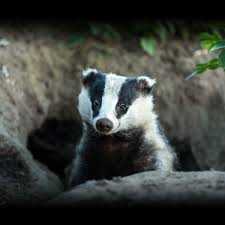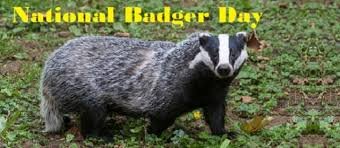National Badger Day – October 6, 2022, history, significance
National Badger Day is celebrated every year on October 6. Now sure, you might see one of these short-legged furry fellas, say ‘aww’ and get into a cuddling mode but make no mistake! These are fearsome creatures who may appear adorable and docile but can fight back when provoked. Apart from being adorable but fierce fighters, badgers are also extremely important for the ecosystem and play an important role.
History of National Badger Day

Badgers have a long history and reputation among humans, and there are few who have actually seen one alive and in person. National Badger Day raises awareness of the need to protect badgers from human predation and brings issues of habitat and health concerns to the common man.
The word for Badger comes from the French ‘Bucher’, which means digger, brought from their tendency to burrow underground and create sets where they raise their families and stay during the day. Badgers, as it turns out, are largely nocturnal, explaining why they’re so rarely seen by most people.
While these creatures are largely harmless and are an important part of their ecosystems, human perceptions of these creatures has led to large culls and ‘badger disposal’ attempts to remove them. One reason for this is the ongoing debate about whether or not badgers are responsible for the spread of tuberculosis,
a disease also known as consumption that is ultimately fatal to humans if untreated. While the debate has yet to reach a conclusion the drive to cull out badger populations is already underway, and only with hard work to raise people’s awareness about these noble creatures can we save the badger.
NATIONAL BADGER DAY TIMELINE
250,000 years ago
Paleontological Evidence
According to paleontological evidence, badgers have been in the British Isles for at least 250,000 years
1835
Badger-Baiting Is Banned
Badger-baiting is banned after opposition from animal rights activists under the “Cruelty to Animals Act of 1835” in England.
1960s
Badger Culling
Badgers are gassed in Europe to control rabies and allegedly to curb the spread of bovine tuberculosis.
1992
Protection of Badgers
“Protection of Badgers Act” makes it an offense to kill, injure or take a badger or to interfere with its home without a license.
NATIONAL BADGER DAY ACTIVITIES
Go see badgers
Visit areas near you that are considered to be badger habitats. Be respectful and maintain distance as you admire these beautiful creatures. Badgers are found in many countries around the world so it shouldn’t be too hard to find them.
Help put an end to badger culling
Show your support in banning the inhumane practice of badger culling. They are suspected of spreading bovine T.B. but little evidence exists to prove this fact. Bovine T.B. is constantly present in the environment and can be carried harmlessly by many species. Write to your local representative to put an end to this shameful practice and choose to increase their focus on caring for cattle instead.
Treat them with kindness
Treat a badger with kindness the next time you run into one! Although they are predators, they are docile creatures unless provoked and may be grateful for any treats you leave out for them.
5 FACTS ABOUT BADGERS THAT WILL BLOW YOUR MIND
There are 11 species
They exist in 11 different species and may be found on every continent except South America, Antarctica, and Australia.
Lean mean digging machine
The den of an American badger can be as deep as ten feet, with more than 30 feet of tunnels along with a large area for sleeping.
They sometimes team up to hunt
American badgers are mainly solitary animals, but they sometimes work with other animals like coyotes if it helps them hunt.
They’re monogamous
Male badgers or boars usually mate with a single partner for life — making them monogamous creatures.
They have a strong sense of family
Some badger homes are over 100 years old as they are passed down to future generations — showing that they can be loving social creatures.
WHY WE LOVE NATIONAL BADGER DAY
Some are at risk
Although most badger species are not considered at risk of endangerment, the greater hog badger is vulnerable and the Bornean ferret-badger is endangered. The greatest threat to the ferret-badger is its vulnerability to catastrophic events with climate change expected to harm them. Hog badgers have a declining population in Bangladesh, Cambodia, India, Laos, Myanmar, Thailand, and Vietnam, mainly because of hunting for food.
They’re very hygienic
Maybe because of their powerful noses, badgers keep their homes in clean conditions by creating a latrine pit as a bathroom outside their burrow. They will never defecate in their homes and instead make a pit out of dried grass and leaves just outside their burrow.
It creates awareness about badger culling
The day can help spread awareness about the brutal process of badger culling where these gentle creatures are killed for being suspected carriers of bovine T.B. without much proof. The current cull in England was a commitment made by the Conservative Party in their election manifesto in 2010 and has been underway since 2013 — killing over 140,000 badgers.
Sandeep Raiza — Content Writer, Website Designer, SEO Strategist, and WordPress Expert AI specialist delivering impactful digital solutions that drive business growth.Combining creative storytelling with technical expertise.




